Hydrocodone addiction can rob you of your health, your dignity, and your hope for a better tomorrow. At Blue Ridge Mountain Recovery Center, you will reconnect with your best self, and begin to build the foundation for a more promising future.
What is Hydrocodone Abuse
Learn More About Hydrocodone Abuse
Hydrocodone is a semi-synthetic medication that comes from the opiate class of drugs. Hydrocodone, a narcotic, relieves pain by binding to the opiate receptors in the central nervous system. Hydrocodone, not generally distributed in its pure form is often known in formulations such as “Vicodin,” “Norco,” and “Loratab.” Hydrocodone, a schedule II or schedule III drug depending upon the formulation and is an active ingredient in hundreds of prescription medications that must be prescribed by a doctor. Over 140 million prescriptions are written each year for medications that contain hydrocodone. Medically, hydrocodone is used as for moderate-to-severe pain management as well as cough-suppression in individuals with pneumonia or whooping cough. Hydrocodone has largely replaced codeine, a less potent prescription drug used to manage pain and cough in individuals with pain disorders or those who have upper respiratory infections.
Unfortunately, as is the case with a number of prescription pain killers, hydrocodone is one of the most popular types of opiates that are abused. While a good number of individuals will only abuse hydrocodone once, certain individuals will continue to abuse these narcotics. Many people who wind up abusing hydrocodone begin by using it to manage a legitimate condition, but upon realizing how pleasant narcotics make them feel, they continue taking the drug to get “high” or relaxed, which can lead to overuse, abuse, and eventual addiction to hydrocodone.
Effects of hydrocodone are quite similar to the effects of morphine and heroin, as usage provides potential hydrocodone addicts with a calm and euphoric state of mind. Depending upon the person taking the drug, addiction to hydrocodone may occur between two and four weeks after beginning to take the drug. Due to tolerance, or the need for more of the drug to produce similar effects, individuals may need to take more and more hydrocodone to achieve the same feelings of euphoria. Hydrocodone is habit-forming with a high potential for abuse, which can lead to continued abuse and physical and psychological addiction.
Abuse of hydrocodone can become deadly. Not only do narcotics such as hydrocodone suppress breathing, but many individuals who are addicted to hydrocodone are poly-substance abusers, meaning that they abuse other medications as well. If hydrocodone is combined with alcohol or benzodiazepines, which also decrease respiration, death can result.
In addition, hydrocodone is often mixed with acetaminophen to discourage abuse of the narcotic. However, acetaminophen in large doses can lead to irreversible liver damage that will cause death no matter how quickly treatment is administered. Many hydrocodone addicts do not heed this very real warning and continue to abuse hydrocodone with acetaminophen no matter what the consequences.
It’s estimated that over five million individuals in the United States will abuse hydrocodone-containing prescription medications each year. With proper detox, treatment, and therapy, hydrocodone addiction is a treatable condition.
Statistics
Statistics on Hydrocodone Abuse
In 2009, according to the American Association of Poison Control Centers, nearly 30,000 individuals sought treatment for hydrocodone abuse and addiction. The National Survey on Drug Use and Health discovered that over 23 million individuals over the age of 12 have abused or misused hydrocodone-containing narcotics.
Causes
Causes of Hydrocodone Abuse & Addiction
While research about addiction is ongoing, it’s generally accepted that addiction is a multi-factorial problem that involves many factors.
Genetic: It’s been shown that individuals who have a first-degree family member who is an addict are more likely to become addicts during their lifetime. While this is not a definitive indicator, it does increase the likelihood that an individual will develop an addiction.
Brain Chemistry: It’s been noted that the brains of addicts may be lacking in certain neurotransmitters responsible for happiness and pleasure in the brain. If an individual is born lacking in these neurotransmitters or their receptors, there may be an effort on the individual to “self-medicate” and correct these inborn defects.
Environmental: Growing up in a family in which addiction runs rampant can have effects on children. Seeing a close relative abuse substances can normalize the usage of substances, making them less frightening and more appealing later in life. In addition, growing up in a chaotic home environment can lead individuals to turn to drugs later in life.
Psychological: Individuals who abuse and become addicted to substances such as hydrocodone may be attempting to self-medicate the symptoms of an undiagnosed and untreated mental illness.
Co-Occurring Disorders
Co-Occurring Disorders and the Complexity of Hydrocodone Addiction
Many individuals who end up abusing narcotic pain medication also suffer from co-occurring mental illnesses. These may include:
- Anxiety disorders
- Depressive disorders
- Conduct disorders
- Post-traumatic stress disorder
- Substance abuse disorders
- Alcoholism
- Bipolar disorder
- Schizophrenia
Signs & Symptoms
Signs and Symptoms of Hydrocodone Abuse
The symptoms of hydrocodone use, abuse, and addiction will vary wildly among those who are addicted to the narcotic. Some of the major symptoms of hydrocodone abuse include the following:
Mood symptoms:
- Euphoria
- Abnormally cheerful mood
- Abnormally despondent mood
- Anxiety
- Emotional liability
Behavioral symptoms:
- Drowsiness
- Requesting frequent refills on hydrocodone
- “Doctor shopping” or visiting a number of doctors to obtain prescriptions for hydrocodone-containing products
- Social withdrawing
- Withdrawing from previously-pleasurable activities
- Financial problems
- Borrowing money from others
- Stealing or borrowing pain medication from others
Physical symptoms:
- Lightheadedness
- Physical dependence upon the narcotic
- Withdrawal symptoms when drug use is stopped
- Nausea and vomiting
- Pupil constriction
- Blood clotting issues
- Rash
- Constipation
- Challenges with urination
- Dry throat
- Itching
- Dizziness
Psychological symptoms:
- Difficulty thinking
- Psychological dependence – the belief that one must be high on hydrocodone in order to function
Effects
Effects of Hydrocodone Addiction
- Pinpoint or blown pupils
- Shallow, slow breathing
- Respiratory failure
- Loss of consciousness
- Liver disease
- Liver failure, which may not be reversible
- Seizure
- Coma
- Death
Withdrawal
Withdrawal Symptoms of Hydrocodone Addiction
The effects of withdrawal from hydrocodone are evident in those who have become physically dependent upon the drug and may occur as quickly as six to ten hours following the last dose. While not generally life-threatening, the intensity of the withdrawal depends entirely upon the length of abuse and amount of hydrocodone used. Withdrawal symptoms from hydrocodone tend to peak between 48 and 72 hours, then decrease within two weeks, although duration will vary among addicts. Typical withdrawal symptoms include:
- Intense craving for hydrocodone
- Diarrhea
- Insomnia
- Depression
- Dilated pupils
- Intense sweating
- Runny nose
- Chills
- Agitation
- Irritability












